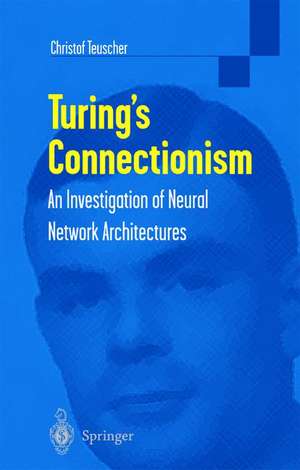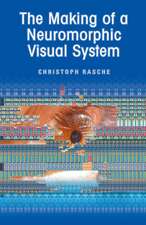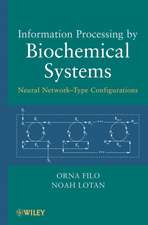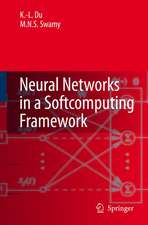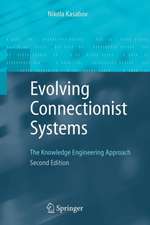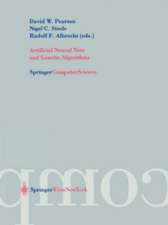Turing’s Connectionism: An Investigation of Neural Network Architectures: Discrete Mathematics and Theoretical Computer Science
Autor Christof Teuscheren Limba Engleză Paperback – 26 sep 2001
Preț: 813.74 lei
Preț vechi: 1017.18 lei
-20% Nou
Puncte Express: 1221
Preț estimativ în valută:
155.73€ • 161.98$ • 128.56£
155.73€ • 161.98$ • 128.56£
Carte tipărită la comandă
Livrare economică 14-28 aprilie
Preluare comenzi: 021 569.72.76
Specificații
ISBN-13: 9781852334758
ISBN-10: 1852334754
Pagini: 230
Ilustrații: XXIV, 200 p. 9 illus.
Dimensiuni: 155 x 235 x 14 mm
Greutate: 0.35 kg
Ediția:2002
Editura: SPRINGER LONDON
Colecția Springer
Seria Discrete Mathematics and Theoretical Computer Science
Locul publicării:London, United Kingdom
ISBN-10: 1852334754
Pagini: 230
Ilustrații: XXIV, 200 p. 9 illus.
Dimensiuni: 155 x 235 x 14 mm
Greutate: 0.35 kg
Ediția:2002
Editura: SPRINGER LONDON
Colecția Springer
Seria Discrete Mathematics and Theoretical Computer Science
Locul publicării:London, United Kingdom
Public țintă
ResearchCuprins
1. Introduction.- 1.1 Turing’s Anticipation of Connectionism.- 1.2 Alan Mathison Turing.- 1.3 Connectionism and Artificial Neural Networks.- 1.4 Historical Context and Related Work.- 1.5 Organization of the Book.- 1.6 Book Web-Site.- 2. Intelligent Machinery.- 2.1 Machines.- 2.2 Turing’s Unorganized Machines.- 2.3 Formalization and Analysis of Unorganized Machines.- 2.4 New Unorganized Machines.- 2.5 Simulation of TBI-type Machines with MATLAB.- 3. Synthesis of Logical Functions and Digital Systems with Turing Networks.- 3.1 Combinational versus Sequential Systems.- 3.2 Synthesis of Logical Functions with A-type Networks.- 3.3 Synthesis of Logical Functions with TB-type Networks.- 3.4 Multiplexer and Demultiplexer.- 3.5 Delay-Unit.- 3.6 Shift-Register.- 3.7 How to Design Complex Systems.- 3.8 Hardware Implementation.- 4. Organizing Unorganized Machines.- 4.1 Evolutionary Algorithms.- 4.2 Evolutionary Artificial Neural Networks.- 4.3 Example: Evolve Networks that Regenerate Bitstreams.- 4.4 Signal Processing in Turing Networks.- 4.5 Pattern Classification.- 4.6 Examples: Pattern Classification with Genetic Algorithms.- 4.7 A Learning Algorithm for Turing Networks.- 5. Network Properties and Characteristics.- 5.1 General Properties.- 5.2 Computational Power.- 5.3 State Machines.- 5.4 Threshold Logic.- 5.5 Dynamical Systems and the State-Space Model.- 5.6 Random Boolean Networks.- 5.7 Attractors.- 5.8 Network Stability and Activity.- 5.9 Chaos, Bifurcation, and Self-Organized Criticality.- 5.10 Topological Evolution and Self-Organization.- 5.11 Hypercomputation: Computing Beyond the Turing Limit with Turing’s Neural Networks?.- 6. Epilogue.- Useful Web-Sites.- List of Figures.- List of Tables.- List of Examples, Theorems, Definitions, Propositions, and Corollaries.
Caracteristici
Contains a Foreword by B. Jack Copeland and D. Proudfoot Develops Turing's ideas, by building his machines and training them using evolutionary algorithms Goes beyond Turing's ideas, and proposes new machines
